Dealing with a Gun Jam
It finally happens… you’re caught in a gunfight and you pull the trigger… but nothing happens. You don’t understand why.
The last three or four shots had worked fine; but now you pull the trigger and nothing happens. You’re sitting there with a worthless gun. What do you do?
Any gun can jam and is most likely to do so at the worst possible moment. Oh, some gun designs are more jam resistant than others, but they can still all jam or malfunction, especially when you’re doing a lot of shooting.
What can often happen is the heat from the burning powder makes the parts of the gun nearest the chamber expand, while other parts that are farther from the chamber remain the same size. This alone is enough to cause a jam. Add a round that is a touch off in size or with a slightly damaged case and you’re sitting there with a gun that won’t fire.
This is the real world and you’ve got to be ready for it.
If you’re going to take up arms, you need to be ready to deal with problems that occur. Otherwise, you might just find yourself in a firefight with a gun that won’t work. In that moment you won’t be able to think; you’ll have to know what to do.
You’ll need to practice gun clearing techniques, so that you’re ready to use them, without even thinking about it.
There are a number of different things that can cause a firearm to malfunction and jam. Fortunately, you don’t have to take time out to diagnose the problem. That’s because no matter what the problem, the solution is the same.
So, here’s the solution. It’s three steps:
1. Tap
2. Rack
3. Shoot
That’s it. If you can do those three steps, you can get any semi-automatic pistol working again, unless it has a serious problem, like something breaking inside.
Let me explain.
Tap – Many misfires or jams are caused by an improperly seated magazine. Some pistol’s magazines sit in such a way that they don’t seat easily. I’ve shot .22 caliber target pistols like this. If you are not especially careful how you insert a new magazine, ensuring that it is fully seated and locked into place, it will fall out when you rack the slide. So, the first thing to do is to tap the bottom of the magazine, in order to seat it.
Rack – Rack the slide, making sure that you pull it all the way back and then release it to slam home. You’ve got to get it all the way back, so that you open the ejection port all the way and allow the slide to pick up a new round to chamber. Some carry guns have a very stiff spring and it’s easy to make the mistake of not pulling it back all the way. Make sure that you don’t allow your hand to ride it back forward, as you might very well slow it down, preventing the chamber from closing fully.
Shoot – Now you should have the misfired round out of the gun and be ready to fire again. Take aim and squeeze off your shot, as if you hadn’t been interrupted.
This system gets you back in action faster than anything else you can do, except to grab another gun, aka the “New York Reload”. And actually, I think a proper tap, rack, shoot by someone that practices it may be just as fast as drawing a backup gun. Since the “New York Reload” is attributed to police officers in New York “back in the day” who would carry a second revolver instead of unwieldly speed clip reloads, and semi-auto reloads today are much faster.
In any event, for those of you who don’t carry a backup gun, it provides you a sure way of getting your gun back in action and allowing you to deal with the bad guys, before it’s too late …
Make sure that you take the time to practice this, as part of your dry-fire drills.
You can make it a part of your regular shooting as well, by randomly loading a snap cap in a magazine and dealing with it when it doesn’t go off. Better yet, have a shooting buddy load it in, as then you won’t know when to expect it. With practice you’ll be able to tap, rack and shoot in two seconds or less, hardly stuttering in your rate of fire.





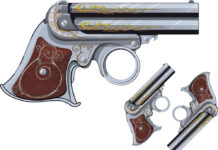




![What Level Holster Should You Be Using? [Video]](/wp-content/uploads/2024/04/Depositphotos_44548439_S-218x150.jpg)
![Case Study: Defensive Gun Use [Video] NSFW](/wp-content/uploads/2025/07/Depositphotos_282075792_S-218x150.jpg)



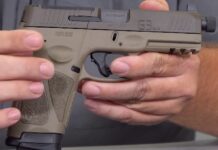


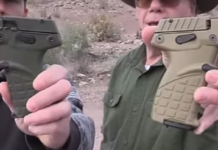
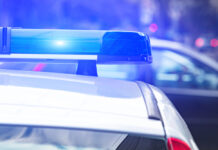




![How to Choose a Good Gun Belt For EDC [Video]](/wp-content/uploads/2023/07/Depositphotos_550145012_L-100x70.jpg)

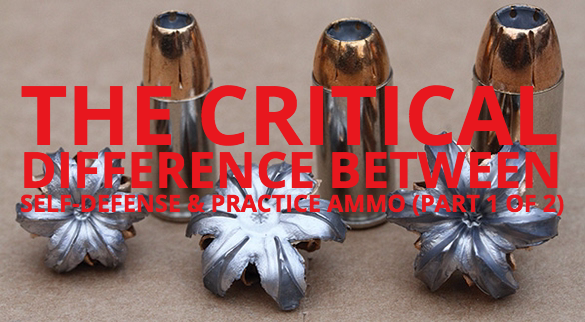





![Optic Ready vs Milled slides? [Video]](/wp-content/uploads/2024/02/image-3-100x70.png)
![[Checklist] What Gear You Need To Take Pistol, Rifle & Shotgun Training Courses [Video]](/wp-content/uploads/2023/07/Depositphotos_275087632_L-100x70.jpg)
![What is in Carter’s 2023 EDC? [Video]](/wp-content/uploads/2023/07/Depositphotos_146856137_L-100x70.jpg)



thank you for your great information,i am appreciating it,but my first thing,is where i can get a pistol dependebel
and not to expensive for self protection.Thank you for your help.
l.g
I thought the 3 words were “Fucking Piece of Shit”….lmao
Another EQUALLY importanmt 3 words: KEEP IT CLEAN!
Hi maybe you can give me some help, I( have a new never fired Auto Ordinance 1911 A1 45 acp. It will chamber full metal jacket ammo fine but when I pull slide back and release it to chamber a Hollow Point round the nose of the round jams on the feed ramp and will not chamber. Can you give me an idea of why ?. Thanks
Some guns can be fickle about hollow point ammo. 1911’s can be because they have “tighter” tolerances. In comparison a glock is a looser design, and less fickle … yet with hollow points it’s ALWAYS a good idea to try about 100-200 rounds of the hollow points you expect to use for self defense because you never know which ones will not chamber or cause a malfunction like you said. That and make sure you pull the slide all the way back and let it go completely letting it violently chamber the round as it’s supposed to (as opposed to trying to “ease” it forward). If that doesn’t work, try different hollowpoints.
Auto Ordinance is pretty much a copy of the older model 45’s – they are not and were not designed for hollow points – has nothing to do with tolerances – the old military ones were loose so they would function even with a little dirt in them- Take it to a decent gunsmith and have him polish the feed ramp, they may need to re-ramp it. Been there and done that along tie ago I had more than one auto-ordinance 45’s
Thanks, Caleb. I value your advice and will include this in my shooting drills.
I had an interesting situation happen in the middle of a USPCA competition.
I was running a course, and did a magazine change, and found myself with a jam!
Now, my Kimber 1911 .45ACP has been one of the most reliable, dependable firearms I’ve had the joy of firing, so to get into this situation was a surprise, but years of competitive shooting had my natural reaction to “tap”, “rack” and shoot, but when I tried to “rack” the slide, almost ripped the skin from my left hand! The slide was jammed!
I had to declare a misfire, and cancel the run, but I couldn’t even drop my magazine and clear the pistol!
When we went to the “safe area” to analyze the malfunction, we found the magazine that I inserted, in the middle of the run, had gone into the mag well too far, and had caused the slide to jam. The magazine change had been while the slide was locked back, and in the “heat of the moment”, when I slammed in the full magazine, I must have damaged the stop slot in the magazine, and that caused the situation.
This was quite a surprise, and it took some mechanical maneuvering to get the magazine out of the mag well, and I decided it was time to buy some good quality (Chip McCormick 10rd. Shooting Star) magazines.
I’ve never had this situation, since, and have fired approximately 25,000 more rounds with these magazines, and pistol, since, and have still to experience another malfunction.
Thanks for the story …
I have a friend, who had the same thing happen to his kimber at a shooting class. He switched to a glock 19 after that … but I’ve heard the same about how important magazines are to the 1911 platform.
I daily carry a 1911, and trust my life to it. If properly maintained a 1911 is as reliable as it gets. Never ever use a magazine in a 1911 that you have not thoroughly checked for function. I have repaired, and or bought several 1911s that were “junk” to the owner simply because they did not check the magazine for function. Any handgun is just as good as its weakest part. An empty 1911 magazine can be dropped multiple times with no malfunction problems, but if you drop one and step on it chances are you just created a dangerous malfunction if your life depends on that magazine. Use reasonable care and most guns are reliable with proper care.
‘tap, rack, ready to shoot’ won’t clear a double feed
correct, hence the title saying tap, rack bang will fix “90% of gun jams and malfunctions”
or..shoot a revolver. Tho they can jam too. I once had a revolver jam bks a projectile moved out of the case just a bit when the round ahead of it in the cylinder fired..the nose of the bullet jammed the cylinder so that it would not revolve into battery for the next round!..live and learn..or die. Most ammo has bullets which are crimped in a groove, but not all. IMHO do not carry cheap ammo in yer carry gun..it might be OK for practice.
I reload and I am careful to crimp fully any revolver rounds. I know some say that it cuts down on the # of times U can reload a case, but cost is not everything.
How do you clear a jam when there is a round that is jammed going into the chamber?
“NewYorkReload”
Double feed? It’s sightly different.
one more important thing to remember is to wait at least 30 seconds before racking the slide, if you have a hang fire and you open the chamber to soon the results could be bad if the round goes off, on the range this is what we teach however in a gunfight situation you do not have the time for this step so remember safety first!
Yup, as an NRA instructor you teach people the “right” way is to wait if there’s a problem firing a round …
If you’re training to defend your life though, you better get that round out and get the gun working as fast as possible.
I made my career out of the Military. You only need to remember 1 word;
REMEMBER-SPORTS
Slap magazine
Pull charging handle back, and or Slide
Observe chamber or any rounds coming out
Release charging handle, slide back to the front
Tap forward assist button, if equipt
Squeeze the trigger
I would offer to consider the significance of the “Bang” or “Shoot” part of the drill. In times of stress, we revert to what we have trained, and in real life engagement, the situation may no longer justify the “Bang”. I’ve switched to “Tap, Rack, Ready”, just to hopefully avoid an error if I’m down to gross motor skill level.
Glad to see all this intelligence and experience aimed at this problem.
A reliability tune up will prevent jams, I do it to every gun that comes into my shop. Polish the feed ramps, relieve and polish the throat, polish the breech face and the chamber and the gun will never jam no matter what type of ammo you are using.
Oh, I thought they were going to use the right three words, “BUY GOOD AMMO”, or maybe “DON’T LIMP WRIST’
Back when I was an instructor for law enforcement, we adopted the saying; Tap, Rack, Ready. We did this since the threat may be over for one reason or another, and since you are responsible for each and every round that goes down range, you had best be sure there is still a threat.
During “rack” watch your fingers. I saw a guy on the range who must have had bad ammo racking all the time. He managed to get his little finger in position and blew it off.
What is moderation? Is someone too sensitive to hear my comment?
[…] more: the malfunction clearing techniques that you use with the pistol all rely on slide manipulation, so you’ll need to know how to do […]
Comments are closed.